Affiliate links on Android Authority may earn us a commission. Learn more.
What's the situation with Bluetooth audio?
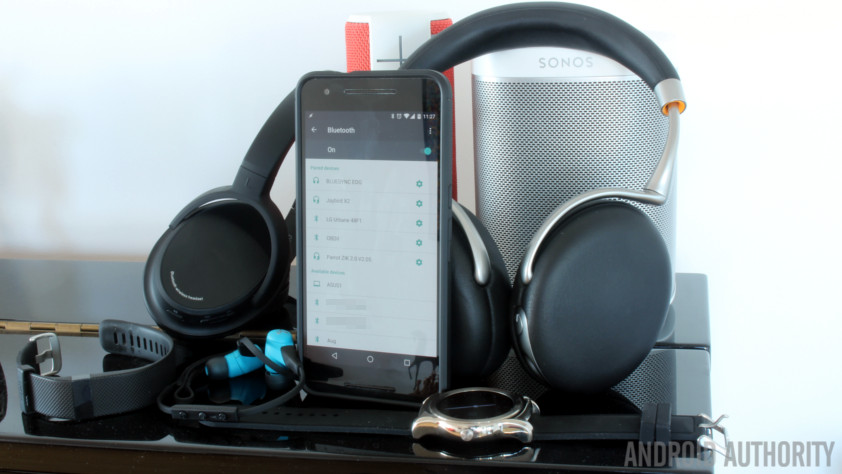
Bluetooth audio is touted as the future of wireless music by some and as the scourge of audio quality by others. With wireless speakers and smart home setups becoming more common, and the headphone jack already disappearing from a number of high-end smartphones, let’s weigh up the merits and drawbacks of Bluetooth audio.
A history of problems
The big bogeyman of Bluetooth music is quality, and it’s certainly true that transferring music over this relatively slow protocol is not going to sound as good as a top notch FLAC file. Why? Well because Bluetooth audio relies on lossy compression, just like the MP3, Microsoft’s WAV, or the common ACC file types. Typical, lossy compressed audio attempts to intelligently chop out bits of audio that we struggle to hear anyway in order to shrink down file sizes, but you might be able to pick up these differences with better audio gear.
Part of the problem is that Bluetooth wasn’t originally designed for music. At a minimum, devices must support “Low Complexity Subband Coding” (SBC), which has historically been configured for low variable bitrates at under 200kbps.
Part of the problem is that Bluetooth wasn’t originally designed for music. In terms of audio, it was only ever really envisioned as a solution for low bandwidth voice communication. At a minimum, devices must support “Low Complexity Subband Coding” (SBC), which has historically been configured for low variable bitrates at under 200kbps. Not exactly the best sound quality. Theoretically, SBC can operate at bitrates up to 345 kilobits per second, but it often isn’t implemented that way and even then doesn’t guarantee the best quality.
Things have improved over the years, with direct support for MPEG and ATRAC audio formats via the Advanced Audio Distribution Profile (A2DP), AAC support over AirPlay, and the rollout of dedicated AptX and AptX HD codecs. However, using any of these profiles requires compatibility on both ends. So your phone and headphones, or phone and speakers both need to support A2DP and MPEG-2 transfers to directly send over an MP3 file. But there are simply too many formats for this to actually work as intended all of the time.
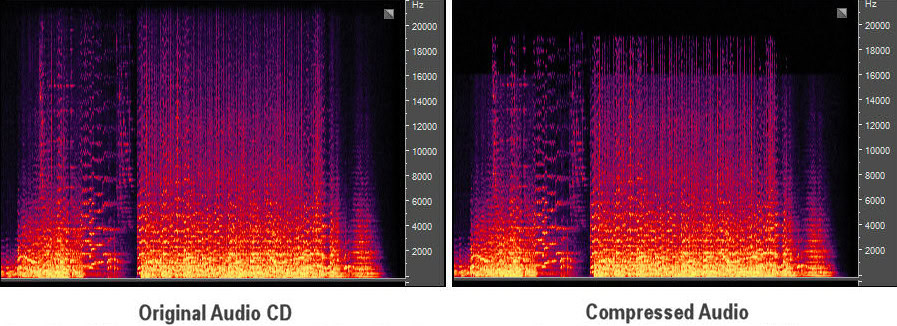
The problem is that all these different formats are often re-encoded when sent over the fallback SBC protocol, so additional compression is applied to already mediocre audio files. A 160kbps Ogg file from Spotify might be decoded,re-encoded and further compressed to be sent over SBC, which won’t sound that great. What this means is that the quality of Bluetooth audio has historically varied a lot more than you might expect.
Fortunately the introduction of Qualcomm’s AptX and the more modern AptX HD solves some of these problems. AptX uses a different algorithm to SBC, which offers a higher bitrate, smarter compression, and lower latency. AptX doesn’t solve the problem of re-encoding already heavily compressed audio files, but it is a more transparent codec that does a better job at preserving quality than its predecessors.
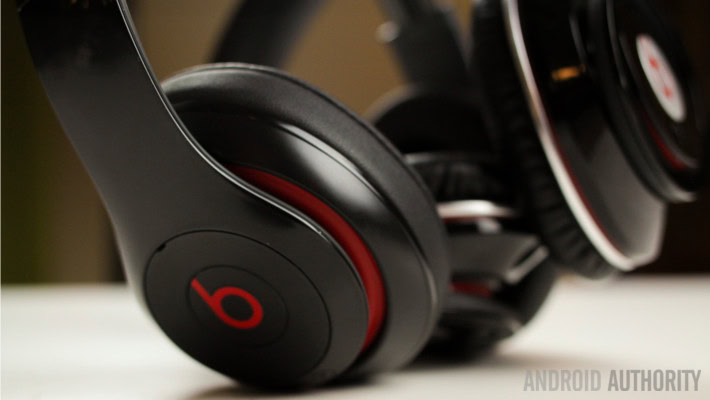
AptX HD is the way to go
AptX is based on adaptive differential pulse-code modulation (ADPCM), rather than psychoacoustic compression. Data is split up into four frequency bands, each with a variable bit-depth. Interestingly, AptX transmits the difference between the original sample and the next predicted sample, and this error code is then decoded on the other end. This requires less data than sending a regular sample. One of the other benefits of AptX over regular Bluetooth transmission is that the conversion latency is lower, which is important for watching movies or gaming in real time.
It’s quite smart and a very different take on compression to the good old MP3. Qualcomm claims that AptX classic sounds indistinguishable compared to a CD, although we know that some people have more discerning ears than others. AptX HD improves the quality of this compression by increasing the bit-depth of these frequency bands by 2 additional bits, bringing the bit-depth in the four bands up to 10, 6, 4, and 4 bits respectively. This results in a higher quality output and better preservation of the source file.
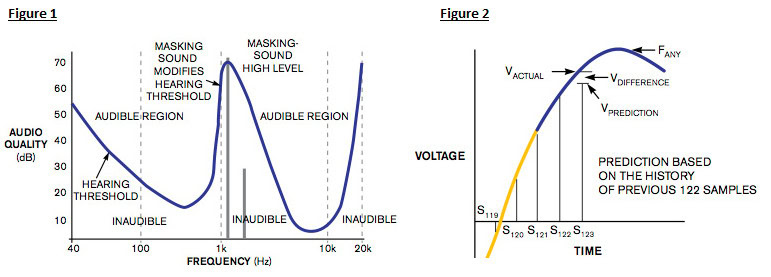
AptX HD supports the conversion of 48kHz 24-bit audio, but remember that this is not a lossless compression format, and the variable bit-depth of the bands results in some compression. If you’re interested in bitrate, AptX comes offers a consistent 4:1 compression ratio resulting in 352 kbps for a 16-bit 44.1kHz stereo file. AptX HD ups this to 576 kbps, thanks to its higher bit-depth. While it’s unwise to directly compared bit-depths between codecs, AptX transfers more data per second than MP3, ACC, and Bluetooth SBC, and should therefore sound at least as good, if not better, with AptX HD extending this further still.
Fortunately for us Android users, it’s estimated that around 70 percent of smartphones support AptX already and a small number of modern flagships are sporting AptX HD compatibilities too, with more expected to be on the way. The HD codec is backwards compatible with the original AptX too. You can find a list of supported devices here. Of course, you’re going to need speakers and/or headphones that support this standard to use it, but there are a lot of those on the market already too.
The quality offered by AptX HD is good enough for most listeners, but you'll need compatible headphones and speakers too. Fortunately, it’s estimated that around 70 percent of smartphones support AptX already.
The quality offered by AptX and its HD variant is, at least on paper, enough for a fine listening experience, and certainly one that can be at least as good as the trusty old 320kbps MP3 and closing in on CD and studio quality files. However, there is still an element of loss and transfer conversion, which means that AptX is still best served when used in conjunction with lossless FLAC and CD PWM files.
Range and connectivity
The other age old complaint leveled at Bluetooth devices is connectivity problems and a lack of range. For headphones, this is less of an issue due to the increasing range, signal strength, and data throughput of the latest Bluetooth hardware revisions. However, the situation can persist for older devices and speakers that are typically placed at longer distances.
Today, there are four classes of Bluetooth radio hardware, with Class 1 maxing out at around 100 meters, 2 at 10 meters, 3 at one meter, and 4 at half a meter. Even one meter should be enough to connect the phone in your pocket to your headphones, although you don’t want to be running close to the maximum ranges of the modem for fear of dropping connections or losing data speeds.
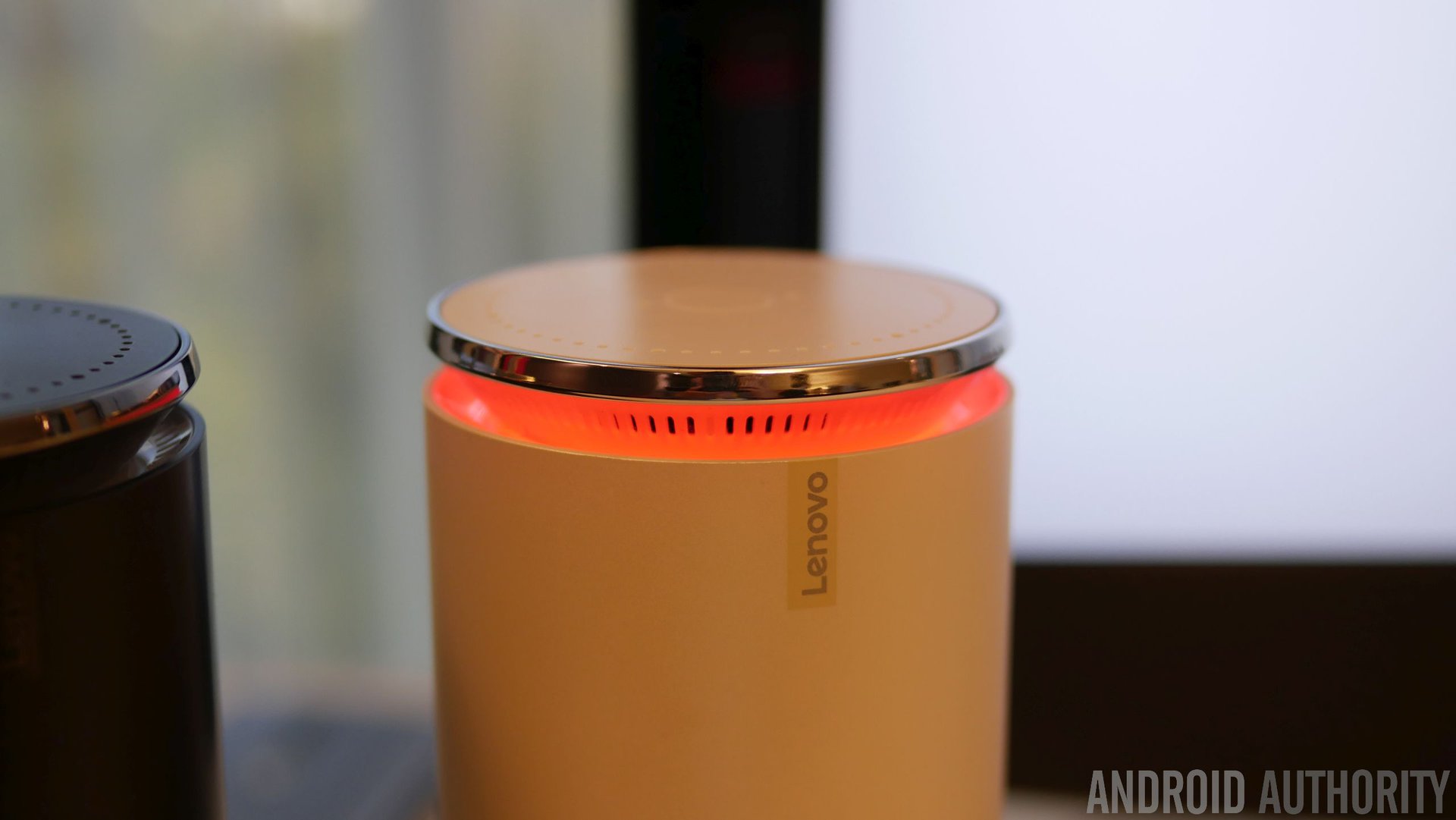
The vast majority of Bluetooth headphones are Class 2, and are specced for ranges 30 feet (9 meters) and slightly above. Remember, obstacles such as walls or interference from other devices will reduce the effective range of Bluetooth, so don’t expect the maximum range available. The trick is that longer rangers require more power, so the introduction of Bluetooth 4.1 Low Energy (LE) has been a boon for wireless headphones.
Speakers and headphones are usually rated for around 30 feet (9 meters), and so Bluetooth isn't the best solution if you're looking for a multiroom setup.
Speakers and using headphones in the living room is a little bit of a different problem. Obviously the distance to your entertainment hub or speaker is greater than to your pocket, and consumers may even expect Bluetooth technology to work seamlessly between rooms. Speakers and headphones are usually both rated for around 30 feet (9 meters), and so Bluetooth isn’t the best solution if you’re looking for a multiroom setup. Instead, Wi-Fi powered speakers would be the better option.
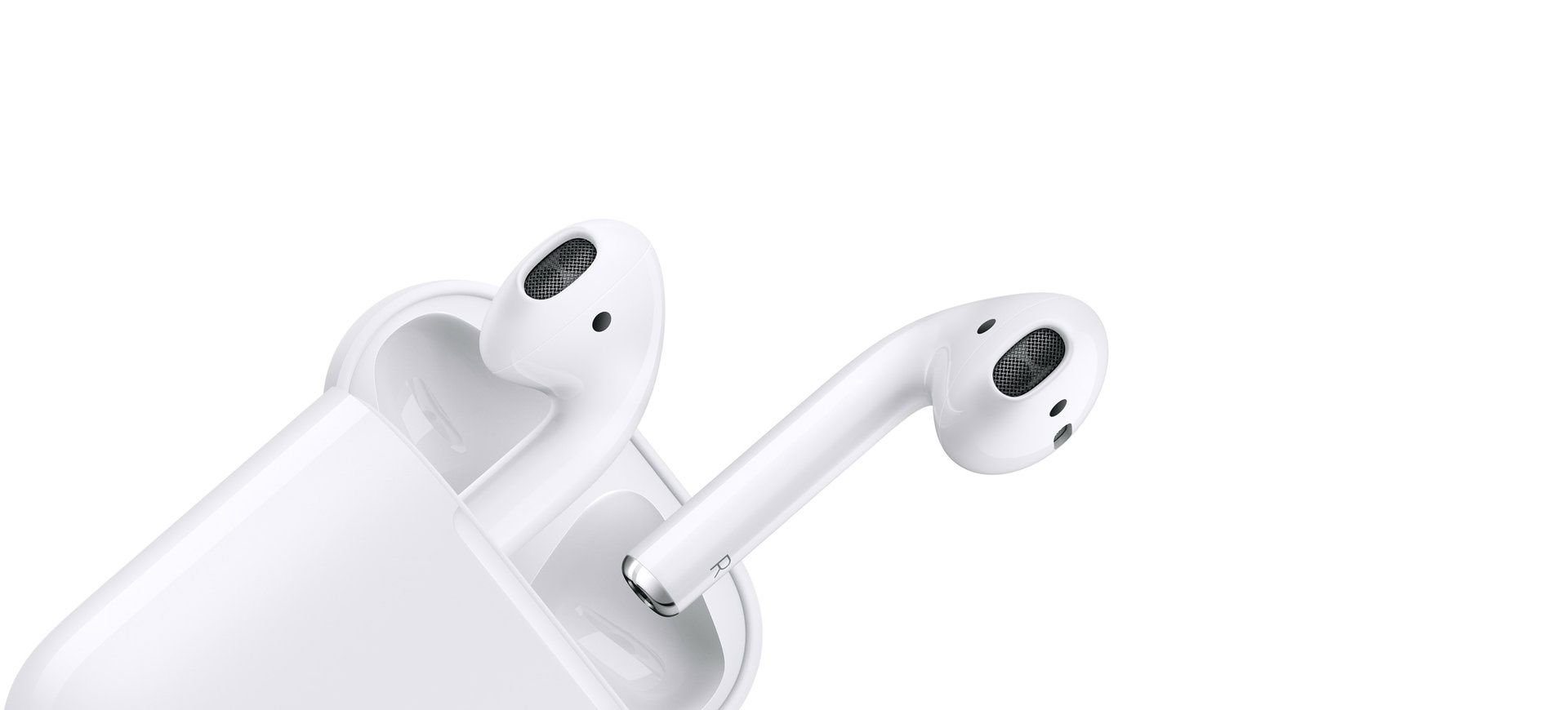
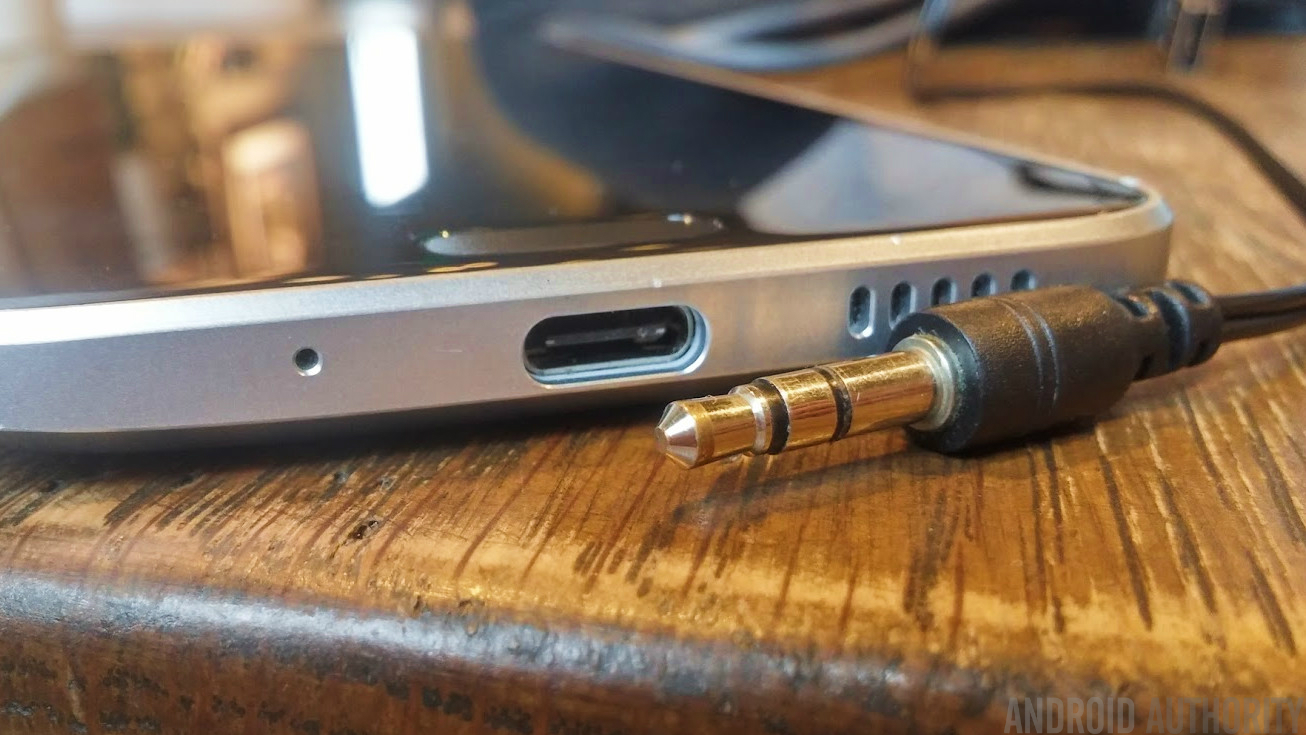
Wrap Up
Historically, Bluetooth audio has rightly deserved some criticism, but the technology is much improved these days and can provide a very positive listening experience. Bluetooth might not satisfy the most picky of listeners, but, when setup correctly, it can offer an experience that is at least as good as the music streaming services and compressed file types that have come to dominate mainstream listening experiences. For many, this small trade-off in quality is going to be worth the convenience of wireless audio.
AptX and the new AptX HD format have improved the quality of wireless audio, but there’s still effort required on the consumer’s part to make sure that they’re picking out compatible hardware and making the most of the file types they have at their disposal. On the whole, the Bluetooth audio market is more complicated than it perhaps needs to be, and one person’s experience with wireless can be different to another’s, based on the hardware they’ve picked out and even file type they’re attempting to play over the system.

In some ways, Bluetooth is an imperfect solution to a complex audio problem, but it’s the best option we have and one that’s constantly improving. What about your own experiences with Bluetooth audio, are you a convert or have you had your share of negative experiences?